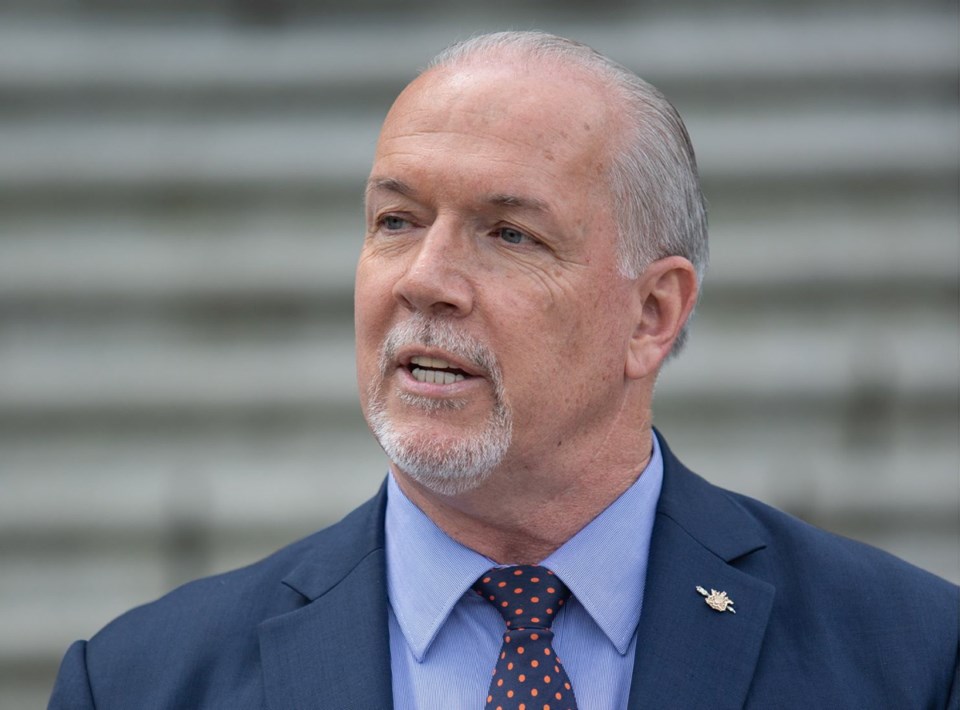Given the dithering the NDP government has displayed on how to replace the four-lane Massey Tunnel, it’s a wonder Premier John Horgan was even invited to the Cascadia conference on innovation.
The main theme of “Cascadia,” that long-held vision of Oregon, Washington and British Columbia as “an innovative ecosystem that attracts capital and the world’s top talent,” is connectedness. The idea of a corridor figures prominently in the thinking.
But any corridor has to cross the Fraser River and that’s where the premier’s attendance turns ironic. There was a brand new 10-lane replacement bridge just moving off the drawing board and into the construction stage when he took office and his government stalled it in its tracks. Because it was a B.C. Liberal idea. Even worse, a Christy Clark idea.
The NDP’s cancellation of what would have been a major contribution to the corridor concept is a very un-Cascadian idea.
Nonetheless, Horgan is scheduled to show up at the Cascadia Innovation Corridor Conference in Seattle this morning. It’s mostly on the strength of his enthusiasm for other Cascadia ideas, like Washington Gov. Jay Inslee’s ultra-high-speed train study, to which Horgan has contributed $600,000 from the B.C. treasury so far.
But that dream is a few years away. Meantime, a new crossing of the Fraser is a much more immediate and realistic corridor idea, and it’s still stalled.
Personal disclosure: I hate the Massey Tunnel, for three reasons:
1. It’s a nasty cramped hole in the ground. Maybe coal miners are comfortable there, but no one else is.
2. The routine gridlock at either end makes estimating travel times difficult, particularly when ferry schedules are involved.
3. It’s an embarrassing national gateway to Canada. Imagine U.S. visitors (or political refugees fleeing Trump) who cross the Peace Arch and are then confronted with a half-hour wait to drive into a hole. It’s a wonder more don’t turn back.
Workers were $90 million into the new replacement bridge job when the government fell in 2017. New NDP Transportation Minister Claire Trevena announced an independent technical review of the project to “find a solution that makes sense.”
Pending the arrival of common sense, all procurement was cancelled, along with the project’s multi-billion dollar budget.
What contributed to the stall was widespread unrest among the region’s mayors about the project, most of whom had differing ideas about how to do it.
Over that time, there was a lot of thrashing around of engineering ideas. The government eventually came up with six other options devised in order to wipe the former government’s fingerprints off the idea and make it an NDP project.
Those ideas have been percolating through Metro Â鶹´«Ă˝Ół»local governments. They involve a combination of six- or eight-lane tunnel or bridge plans, or a combination of bridge and tunnel in various configurations.
The most depressing thing in the report on different options is that the status quo isn’t completely ruled out. Although it acknowledges pressing needs, there’s an observation that, with proper maintenance, the Massey Tunnel will last for another 50 years.
A mayors’ task force picked an eight-lane tunnel Wednesday as their choice. That aligns politically, as at least the NDP now has something completely different to show for the two-year delay. Whether it makes sense technically is still to be argued out.
But even with that small advance, the decision is far from made. It has to go to another committee, then the full regional board, then back to the government. A final decision could be expected late next year, which would put an expected completion date in 2025-26.
There isn’t as much discretionary money around as there was two years ago, although that’s offset by the fact that campaigning national politicians are taking an interest and have promised some federal money for the job.
Just So You Know: In the meantime, a $3-million paving job started this week on the highway on either end of the tunnel, part of $40 million in stop-gap work that will have to suffice for five or six more years of regular twice-daily gridlock. This is not how to build an innovation corridor.



